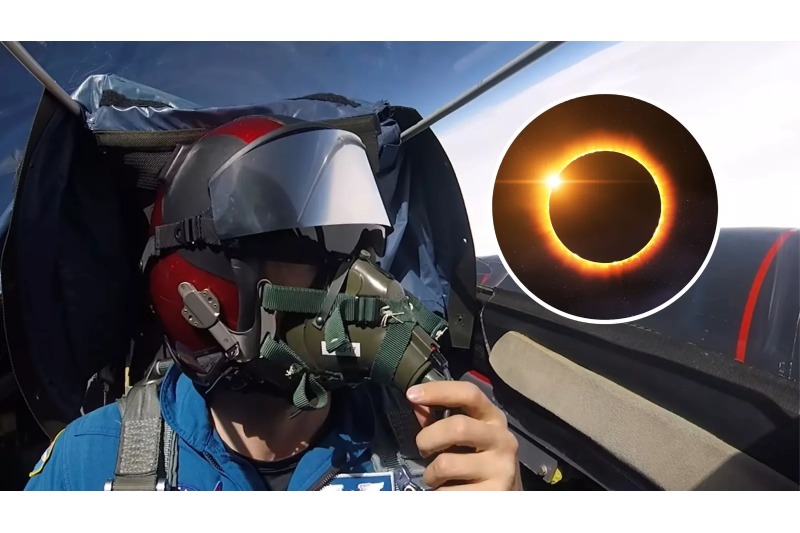NASA Jets will Chase Eclipse on Monday at 460 mph

NASA is sending aircraft to pursue the moon’s shadow, which will cross a large portion of North America on April 8 during the total solar eclipse.
NASA’s two WB-57 jet aircraft will track the eclipse as it moves over the United States, tracking its path of totality and using special instruments to train on the sun’s outer atmosphere, or corona.
Three groups of NASA scientists aim to observe any stray asteroids that are typically concealed in the sun’s glare, as well as gain a better understanding of the structure and temperature of the corona, as well as how the sun affects the ionosphere of our planet.
According to Bharat Kunduri, the primary researcher for the ionosphere measurement and a research assistant professor at Virginia Tech in Blacksburg, Virginia, “the eclipse basically serves as a controlled experiment,” a statement was released.
WB-57s can soar over clouds and airborne particles to reach altitudes of up to 50,000 feet (15,000 meters) and take crisp pictures in visible and infrared light.
The jets will take off and land precisely in time for the eclipse to pass; they will accelerate to 460 mph (740 km/h) in order to extend the observed totality time by 25 percent, or around 6 minutes and 22 seconds. In contrast, in Torreón, Mexico, the longest totality to be seen from the ground will be 4 minutes, 27 seconds.
Spectrometers installed on the planes will measure the temperature, elements, and coronal mass ejections—eruptions that occur during the eclipse—as they speed down the eclipse’s eastward route. In the meantime, cameras will detect light from the middle and lower corona at mid-infrared wavelengths. By taking pictures with such high resolution, these cameras may be able to identify a dust ring near the sun that is thought to be home to asteroids.
“By extending the duration of totality, we’re increasing the duration of how much data we can acquire,” Shadia Habbal, a researcher at the University of Hawaii Institute for Astronomy and the lead scientist of one of the experiments, said in the statement. “This light is our best probe short of sticking a thermometer in the corona.”
In order to determine the precise charge of the ionosphere, scientists will conduct a third experiment to examine the impact of the moon’s shadow on Earth.